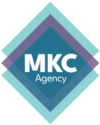It’s a delicate balance, not unlike a tightrope walk in a fancy circus.
On the one hand, you don’t want to scare clients away with ridiculously high prices or poorly-framed pricing packages for your product; on the other hand, you don’t want to be giving away your hard work (born of blood, sweat and tears) for less than it’s worth, leaving mounds of potential revenue on the table.
If you’re an SaaS company (Software as a Service), you might just be falling into one of the biggest traps of the biz; having an inefficient (or nonexistent) pricing strategy. Many businesses struggle to understand their worth to potential customers or communicate their value. An SaaS business has very unique needs that need to be considered.
Not all companies use a subscription-based pricing model; juggling ongoing customer payments and complex product packages mean that SaaS companies need to think long and hard about their pricing strategies.
As an SaaS business, you’ve got to nail your pricing strategy to be successful. What does that look like? And why is it important?
Why it Matters
Two words: growth and sustainability. The truth is that most SaaS companies do one of two things: either they launch with a pricing model based on instinct and never revisit it again, or else they set a pricing model early on and stick to it no matter what, too scared to make the changes needed to follow their growth. The fear of failure holds them back and as a result, they never scale and keep up with the momentum they need to sustain the natural evolution of their business needs. Building a killer pricing model will inject fresh growth and sustainability for your SaaS company.
Additionally, optimizing your pricing strategy will give you a competitive advantage over your rivals (who also struggle to set prices for their services). Most importantly, taking the time to sit down and think about the value you add to your customers–and how that is reflected in your pricing model–will make it easier for customers to sign up feeling convinced that your prices are justified.
Finally, while many companies equate increased customers with growth, monetization is actually the single most deciding factor in how an SaaS business is able to scale up. Gaining customers and retaining them is crucial; but once your loyal customer base is there, adjusting your pricing model accordingly will give you the resources to continue building your business.
Now let’s focus on the most popular–and successful–SaaS pricing models out there.
Pay-per-User
Just as the name suggests, in this model, the buyer pays for the number of users who will access the platform. A word of caution: many products provide a common login that can be used by multiple users, effectively circumventing the pay-per-user process and minimizing the costs for the buyer. In this model, buyers can pay by team member on a monthly or annual basis (usually at a reduced cost for longer commitments).
Volume Pricing
In this model, the price per unit decreases as additional features are added on and packages are upgraded. The more units a customer adds, the less he pays for each feature.
Per-Storage Pricing
The best example of this is cloud-based storage services, where the user pays for the amount of storage space used. Usually this fee is paid monthly or yearly.
Feature-Based Pricing
In this model, users pay for the specific features they want and need. This can be in the form of individual feature add-ons, special packages, tiered packages of features (starting with a basic tier of base features that can be upgraded to higher tiers as needed) or bundles of specific features for select target audiences.
Flat-rate
A flat-rate model charges one same fee no matter how many people use the service or how often it’s used. This model offers maximum flexibility to both parties as the seller is sure to make a set amount while the buyer has leeway in how much use they get out of the service.
Pay-As-You-Go
In this model, buyers are charged every time they use the service. This spells inconsistent revenues for SaaS businesses, since new customers have varying usage needs that are hard to estimate or predict. The price per use therefore tends to be higher (to counter the lack of commitment).
The Pay-As-You-Go model is often paired with a subscription-based or Flat-Rate model in order to give the customer some flexibility. They can choose between paying the higher price for each individual use, but only shelling out when they use the product; or they can pay smaller fees for individual usage while still needing to pay, whether they use the product frequently or not.
These are the most common and oft-used pricing models for SaaS businesses. Regardless of which model you choose, the most important takeaway is that you need to have a well-thought-out pricing strategy in place and frequently revisit whether that model is still working for your company or if it needs to be tweaked to support growth and ensure sustainability for your company.
Not sure which pricing model is best for your SaaS business? Unsure how to go about figuring out what your needs are? Megan Killion Consulting is a team of dedicated, experienced professionals who are equipped to support your growing business so you can get the results you want. Give us a shout, and we can start working together to meet your unique SaaS needs and help you figure out the right pricing model for your company.

